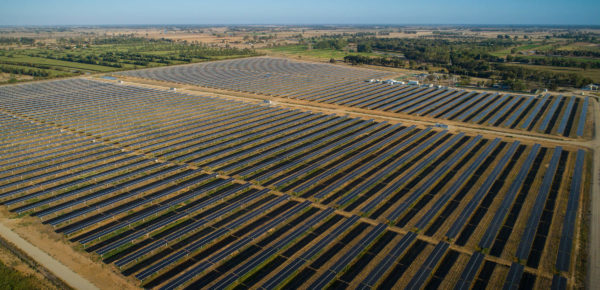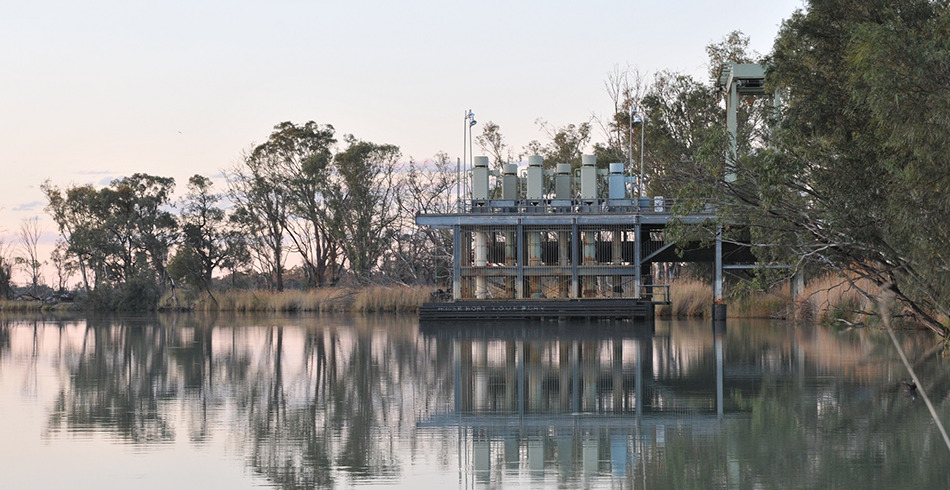Enel X, the innovations spinoff of Italian energy utility Enel, said it has agreed to finance, manage and optimise more than 8 MW of battery energy storage systems (BESS) across Central Irrigation Trust (CIT) water irrigation sites in South Australia’s Riverland region.
The first stage of the project will see BESS with 4.4 MW of combined power output and 7.4 MWh of energy capacity installed across four CIT sites in the first half of 2022.
Enel X, which operates Australia’s largest Virtual Power Plant (VPP) with more than 350 MW under management, said it will own and operate the battery systems and share the electricity cost reduction benefits with the irrigation trust. Central to this proposition will be Enel X’s Distributed Energy Resources Optimisation Software (DER.OS).
DER.OS uses machine learning and artificial intelligence (AI) algorithms to analyse data sets that include the sites’ energy demand, weather forecast inputs and electricity grid conditions.
Jeff Renaud, head of Enel X Asia and Oceania, said the platform then optimises the BESS’ charging and discharging strategy, reducing the demand charges the customer is levied for its use of peak-time electricity.
It can also play into various revenue-generating market opportunities, including integration with Enel X’s Virtual Power Plant (VPP) platform to access demand response programs which support the grid and allow CIT, which pumps water from the River Murray to an estimated 1,600 growers who irrigate about 14,000 hectares of crops in the Riverland region, to reduce its energy costs.
Renaud said the BESS project demonstrates the viability of large, distributed batteries hosted on commercial and industrial (C&I) sites and will “intelligently manage the Trust’s energy use”.
“Our customised, turnkey solution will help CIT optimise its energy usage and costs, allowing the sites to run more efficiently while increasing resiliency,” he said. “Our DER.OS platform will allow the batteries to ‘value stack’ across our demand response programs including energy market arbitrage, frequency control ancillary services (FCAS), and access the upcoming wholesale demand response mechanism (DRM).”
CIT chief executive officer Greg McCarron said the project, described by Enel X as Australia’s biggest C&I energy storage system, would reduce the organisation’s energy costs and help it achieve its sustainability goals.
“The BESS will allow us to significantly lower our carbon footprint while supporting the grid, the community and our customers, at no cost to us,” he said. “This will contribute to the reliability of the energy system, enable more renewables, help avoid power outages, and reduce our energy expense.”
Enel X, which has been operating in the Australian C&I energy market since 2011, said it plans to expand its BESS offering as it looks to broaden its participation in the market.

Image: Enel
In October, Enel X became the first registered provider for Australia’s new DRM, which for the first time gave organisations the capacity to trade their flexible electricity loads on the wholesale electricity market.
Assets including Enel X’s VPP will be aggregated to allow the Australian Energy Market Operator (AEMO) to better manage supply and demand on the National Electricity Market (NEM).
Earlier this month, parent company Enel Group launched a ‘green energy retailer’ business after receiving approval from the Australian Energy Regulator (AER). Initially serving C&I customers, the retail operation will combine Enel X’s technology platforms, including its VPP, behind-the-meter battery storage assets and electric vehicle (EV) charging solutions with clean energy division Enel Green Power’s renewable energy generation assets.
Enel Green Power currently holds 310 MW of combined generation capacity through three solar plants, including Bungala One and Two, which together have a capacity of 275 MW, as well as the 34 MW Cohuna Solar Farm in Victoria.
This content is protected by copyright and may not be reused. If you want to cooperate with us and would like to reuse some of our content, please contact: editors@pv-magazine.com.









By submitting this form you agree to pv magazine using your data for the purposes of publishing your comment.
Your personal data will only be disclosed or otherwise transmitted to third parties for the purposes of spam filtering or if this is necessary for technical maintenance of the website. Any other transfer to third parties will not take place unless this is justified on the basis of applicable data protection regulations or if pv magazine is legally obliged to do so.
You may revoke this consent at any time with effect for the future, in which case your personal data will be deleted immediately. Otherwise, your data will be deleted if pv magazine has processed your request or the purpose of data storage is fulfilled.
Further information on data privacy can be found in our Data Protection Policy.